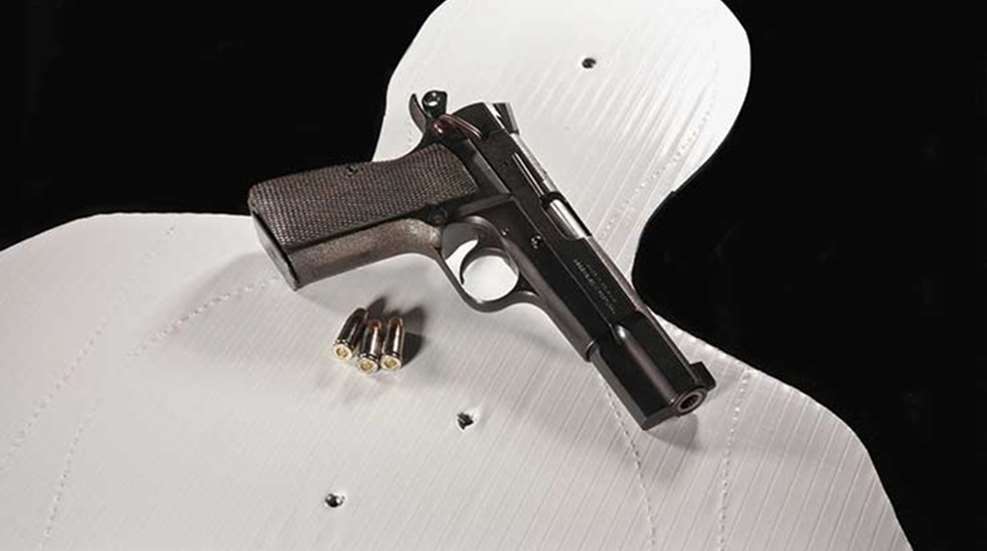
During the Mozambique War of Independence (1964-1974) mercenary Mike Rousseau was fighting at the airport in Moputo. During the fighting, he encountered a guerrilla fighter armed with an AK-47 at very close range. Rousseau delivered two shots to the enemy's vital zone with a Browning Hi Power only to see his adversary stay on his feet and keep coming. Rousseau quickly fired a third shot which was aimed at the man's head. Probably having jerked the trigger just a bit, Rousseau saw his bullet take effect in the fighter's neck, dropping him immediately.
Some time later, Rousseau related this event to Col. Jeff Cooper, of Gunsite Academy fame. Cooper realized the value of the technique and incorporated it as a defensive drill in his school. Since those days, the drill has also come to be called "The Failure Drill" or "The Failure To Stop Drill."
There may be a lot of reasons why two shots to an attacker's vital zone fails to put him down. Attackers could be wearing body armor. They could be high on drugs. Of course, it could just be that the two shots missed the various organs located in the vital zone. In the end, it really doesn't matter why they are still on their feet and functioning.The fact is that they are still a very real threat and must be dealt with quickly.
The third shot should properly be delivered to the head in order to impact the central nervous system. When done correctly, this third shot will turn the attacker's lights out immediately. And the reason that this head shot is not delivered in the beginning is because the target is much smaller and the head is generally always moving. In all, it is a much smaller, more difficult target to hit.
When defensive shooters practice delivering two shots to the vital zone, they are reminded that they may fire two shots, but they should see their sight picture three times. Because we don't have any assurance that the two shots will have the desired effect, we pull our pistol out of recoil and take the third sight picture, ready to deliver more shots should they be needed. If the attacker is still on his or her feet and appears to be functional, the third shot is then delivered to the head.
But a shot to just anywhere in the head is not necessarily going to be effective.The bones in the forehead are quite thick and may cause the bullet glance off and fail to penetrate. Imagine an upside-down triangle, of about four inches on every side, with the top edge being the eyes and the bottom point being the upper lip, just below the nose. This is the area where facial bones are the thinnest and a bullet delivered to this location has the best chance to getting the brain and/or brain stem and stopping the criminal attack.
We often see shooters practicing this drill by firing three shots in cadence with each other (bam, bam, bam) as quickly as they can. And this is actually an incorrect method. The proper cadence is bam, bam. Pause. Bam.
The reason for this is that the first two shots are being fired to an 8" vital zone.With practice, they can be delivered very quickly. However, the third shot is being delivered to a much smaller area, and it is only being delivered if it is necessary. We deliver the two shots, recover our sight picture and evaluate the threat. Should the third shot be needed, we tighten up and deliver it as accurately as possible, thus the pause.
In actuality, it is a difficult drill that few can perform properly and effectively. It takes a lot of practice and plenty of determination and cool nerves to perform in an actual fight. But we know that it can be done.
While two shots to the vital zone of an attacker will usually stop the threat, determined defensive shooters know that this will not solve the problem 100 percent of the time. They practice the Mozambique, or Failure Drill, to deal with that eventuality.


































